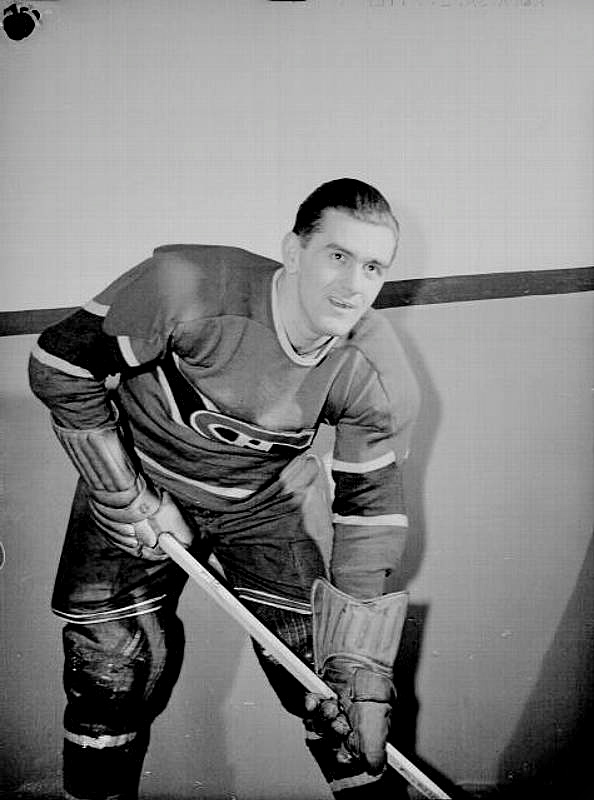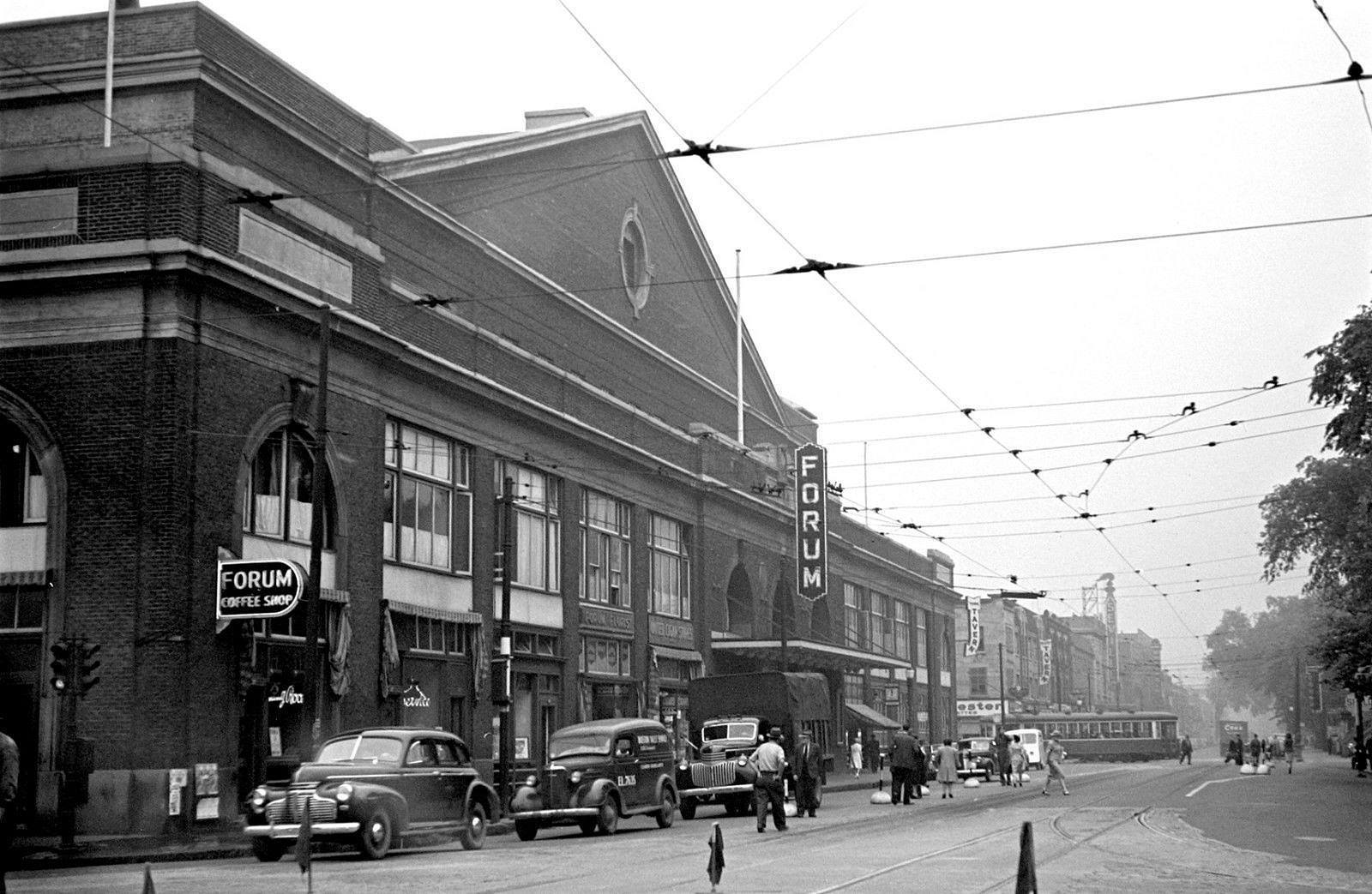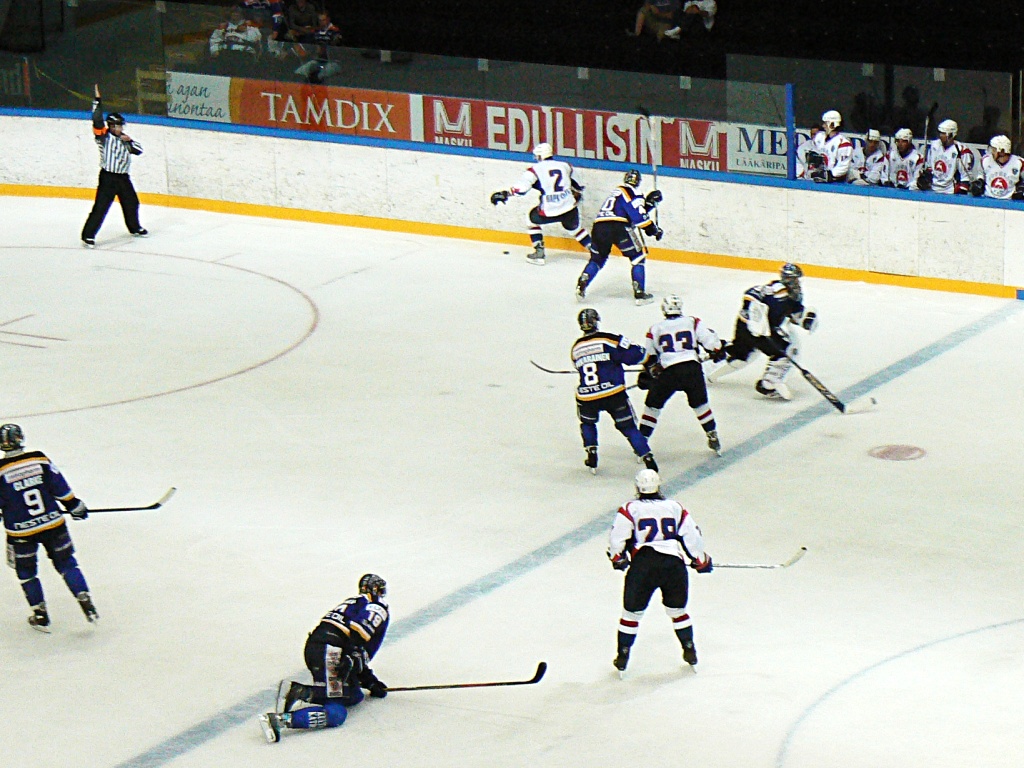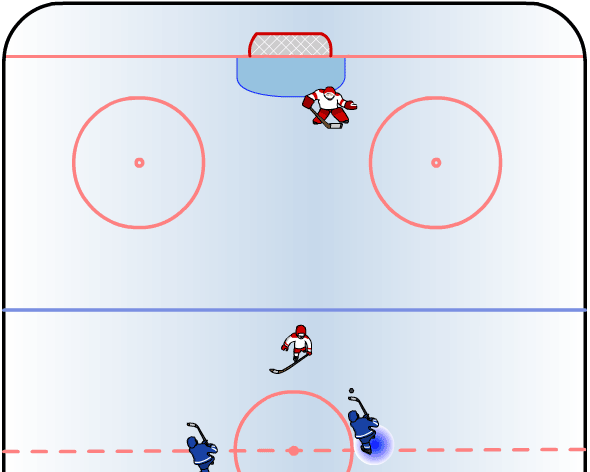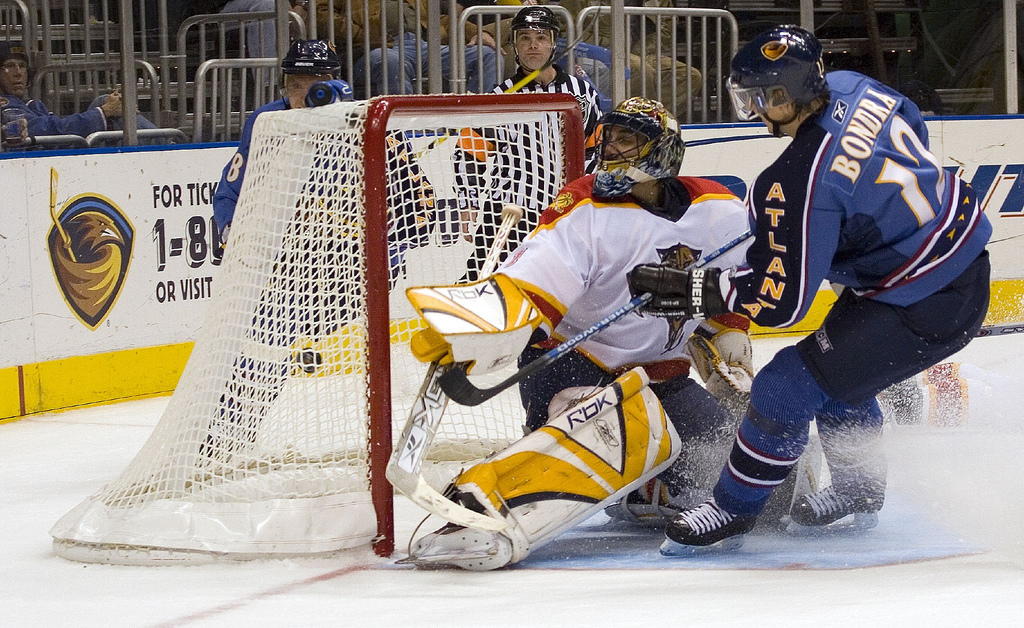|
Buddy O'Connor
Herbert William "Buddy" O'Connor (June 21, 1916 – August 24, 1977) was a Canadian professional ice hockey centre who played for the Montreal Canadiens and New York Rangers in the National Hockey League between 1941 and 1951. He won the Hart Trophy and Lady Byng Trophy in 1948. Playing career O'Connor played for the Montreal Canadiens from 1941 to 1947 and won two Stanley Cups during his career in 1944 and 1946 while playing for the Canadiens. In 1947, O'Connor was traded to the New York Rangers. He had 60 points that season, finishing second to Montreal's Elmer Lach in the scoring race. He was also awarded the Hart Memorial Trophy and Lady Byng Memorial Trophy and was the first player to win both in the same year. He was also the first Ranger to win the Hart. These achievements were reflected in his being named winner of the Lionel Conacher Award, as Canada's male athlete of the year for 1948. O'Connor played for the Rangers until 1951. He was inducted into the Hockey Hall of F ... [...More Info...] [...Related Items...] OR: [Wikipedia] [Google] [Baidu] |
Montreal Canadiens
The Montreal Canadiens (), officially ' ( Canadian Hockey Club) and colloquially known as the Habs, are a professional ice hockey team based in Montreal. The Canadiens compete in the National Hockey League (NHL) as a member of the Atlantic Division (NHL), Atlantic Division in the Eastern Conference (NHL), Eastern Conference. Since 1996, the team has played its home games at the Bell Centre, originally known as the Molson Centre. The Canadiens previously played at the Montreal Forum, which housed the team for seven decades and all but their first two Stanley Cup championships. Founded in 1909, the Canadiens are the oldest continuously operating professional ice hockey team worldwide, and the only existing NHL club to predate the History of the National Hockey League, founding of the league. One of the earliest Major professional sports teams in the United States and Canada, North American professional sports franchises, the Canadiens' history predates that of every other Canad ... [...More Info...] [...Related Items...] OR: [Wikipedia] [Google] [Baidu] |
Hockey Hall Of Fame
The Hockey Hall of Fame () is a museum and hall of fame located in Toronto, Ontario, Canada. Dedicated to the history of ice hockey, it holds exhibits about players, teams, National Hockey League (NHL) records, memorabilia and National Hockey League awards, NHL trophies, including the Stanley Cup. Founded in Kingston, Ontario, the Hockey Hall of Fame was established in 1943 under the leadership of James T. Sutherland. The first class of honoured members was inducted in 1945, before the Hall of Fame had a permanent location. It moved to Toronto in 1958 after the NHL withdrew its support for the International Hockey Hall of Fame in Kingston, Ontario, due to funding issues. Its first permanent building opened at Exhibition Place in 1961. The hall was relocated in 1993, and is now in downtown Toronto, inside Brookfield Place (Toronto), Brookfield Place, and a historic Bank of Montreal building. The Hockey Hall of Fame has hosted International Ice Hockey Federation (IIHF) exhibits and ... [...More Info...] [...Related Items...] OR: [Wikipedia] [Google] [Baidu] |
Allan Cup
The Allan Cup is the trophy awarded annually to the senior ice hockey champions of Canada. It was donated by Sir Montagu Allan of Ravenscrag, Montreal, and has been competed for since 1909. It was most recently won by the Wentworth Gryphins in 2025. History In 1908, a split occurred in the competition of ice hockey in Canada. The top amateur teams left the Eastern Canada Amateur Hockey Association, which allowed professionals, to form the new Inter-Provincial Amateur Hockey Union (IPAHU), a purely amateur league. The trustees of the Stanley Cup decided that the Cup would be awarded to the professional ice champion, meaning there was no corresponding trophy for the amateur championship of Canada. The Allan Cup was donated in early 1909 by Montreal businessman and Montreal Amateur Athletic Association president Sir H. Montagu Allan to be presented to the amateur champions of Canada. It was to be ruled like the Stanley Cup had, passed by champion to champion by league champio ... [...More Info...] [...Related Items...] OR: [Wikipedia] [Google] [Baidu] |
1935 Allan Cup
The 1935 Allan Cup was the senior ice hockey championship of the Canadian Amateur Hockey Association (CAHA) for the 1934–35 season. In the best-of-three final, the Halifax Wolverines defeated the Port Arthur Bearcats two games to none. Final In the best-of-three final, the Halifax Wolverines defeated the Port Arthur Bearcats two games to none. *Halifax 3 Port Arthur 2 *Halifax 4 Port Arthur 3 1936 Winter Olympics The Halifax Wolverines were chosen to represent Canada in ice hockey at the 1936 Winter Olympics. The Wolverines subsequently disbanded before the 1935–36 season. The Port Arthur Bearcats were invited and promptly accepted. They had lost only one player from the previous season and were given the possibility of adding up to four players from the Wolverines. Great Britain went on to capture the gold medal and Canada received the silver medal. The 1936 tournament was the first time in which Canada did not win the gold medal in ice hockey at the Olympic Games Ice ... [...More Info...] [...Related Items...] OR: [Wikipedia] [Google] [Baidu] |
Quebec Senior Hockey League
The Quebec Senior Hockey League (QSHL) was an ice hockey league that operated from 1941 to 1959, based in Quebec, Canada. The league played senior ice hockey under the jurisdiction of the Quebec Amateur Hockey Association until 1953, when it became professional and operated as the Quebec Hockey League (QHL). History The origins of the Quebec Senior Hockey League (QSHL) rest with the Quebec Amateur Hockey Association (QAHA) which grew out of the Inter-Provincial Amateur Hockey Union which began play in Quebec from 1908. The bulk of the teams that formed the QSHL were part of the Montreal Senior Group of the QAHA. The QAHA re-organized its senior league for 1941 and the QSHL was formed. 1940s During the 1940–41 season, '' The Gazette'' reported rumors that QSHL players discussed strike action in protest of lower financial compensation given to players for their expenses, which was blamed the implementation of a reserve list system which prevented teams from competing for the sam ... [...More Info...] [...Related Items...] OR: [Wikipedia] [Google] [Baidu] |
Royal Montreal Hockey Club
The Royal Montreal Hockey Club, also known as the Montreal Royals, was a Canadian amateur ice hockey club formed in Montreal, Quebec, in 1932. It operated various teams in men's junior and senior leagues until 1961. The senior team of the club won the Allan Cup men's championship in 1939 and 1947, and the junior team of 1949 won the Memorial Cup junior men's Canadian championship. History The hockey club was founded in 1932, operated by E. S. Hamilton and G. T. Ogilvie. Formed from the Montreal Hockey Club, the senior Royals played in the Quebec Amateur Hockey Association play from 1932–1933, in the Quebec Senior Hockey League from 1944–1953, the Quebec Hockey League from 1953–1959, and the Eastern Professional Hockey League from 1959–1961. The senior Royals won the QSHL championship in 1945 and 1946, and the QHL championship in 1959. The senior Royals won the Allan Cup in 1947. The junior Royals played in the Quebec Junior Hockey League. The Junior team ... [...More Info...] [...Related Items...] OR: [Wikipedia] [Google] [Baidu] |
Penalty (ice Hockey)
A penalty in ice hockey is a punishment for an infringement of the rules. Most penalties are enforced by sending the offending player to a penalty box for a set number of minutes. During the penalty the player may not participate in play. Penalties are called and enforced by the Official (ice hockey)#Referees, referee, or in some cases, the Official (ice hockey)#Linesmen, linesman. The offending team may not replace the player on the ice (although there are some exceptions, such as fighting), leaving them short handed, short-handed as opposed to full strength. When the opposing team is said to be on a ''Power play (ice hockey), power play'', they will have one more player on the ice than the short-handed team. The short-handed team is said to be "on the penalty kill" until the penalty expires and the penalized player returns to play. While standards vary somewhat between leagues, most leagues recognize several common varieties of penalties, as well as common infractions. The statist ... [...More Info...] [...Related Items...] OR: [Wikipedia] [Google] [Baidu] |
Point (ice Hockey)
In ice hockey, a player is credited with one point for either a goal or an assist. The total number of goals plus assists equals total points. In the National Hockey League The National Hockey League (NHL; , ''LNH'') is a professional ice hockey league in North America composed of 32 teams25 in the United States and 7 in Canada. The NHL is one of the major professional sports leagues in the United States and Cana ... (NHL), the Art Ross Trophy is awarded to the player who leads the league in points at the end of the regular season. References NHL Rulebook, Rule #78– Goals and Assists {{Ice hockey navbox Ice hockey statistics Ice hockey terminology ... [...More Info...] [...Related Items...] OR: [Wikipedia] [Google] [Baidu] |
Assist (ice Hockey)
In ice hockey, an assist is attributed to up to two players of the scoring team who shot, passed or deflected the Puck (sports)#In ice hockey, puck towards the scoring teammate, or touched it in any other way which enabled the Goal (ice hockey), goal, meaning that they were "assisting" in the goal. There can be a maximum of two assists per goal. The assists will be awarded in the order of play, with the last player to pass the puck to the goal scorer getting the primary assist and the player who passed it to the primary assister getting the secondary assist. Players who gain an assist will get one point (ice hockey), point added to their player statistics. When a player scores a goal or is awarded a primary or secondary assist, they will be given a point. The leader of total points throughout an NHL season will be awarded the Art Ross trophy. Despite the use of the terms "primary assist" and "secondary assist", neither is worth more than the other, and neither is worth more or less ... [...More Info...] [...Related Items...] OR: [Wikipedia] [Google] [Baidu] |
Goal (ice Hockey)
In ice hockey, a goal is scored when the puck entirely crosses the goal line between the two goal posts and below the goal crossbar. A goal awards one point to the team attacking the goal scored upon, regardless of which team the player who actually deflected the puck into the goal belongs to (see also own goal). Typically, a player on the team attempting to score shoots the puck with their stick towards the goal net opening, and a player on the opposing team called a goaltender tries to block the shot to prevent a goal from being scored against their team. The term goal may also refer to the structure in which goals are scored. The ice hockey goal is rectangular in shape; the front frame of the goal is made of steel tube painted red and consists of two vertical goalposts and a horizontal crossbar. A net is attached to the back of the frame to catch pucks that enter the goal and also to prevent pucks from entering it from behind. The entire goal is considered an inbounds area ... [...More Info...] [...Related Items...] OR: [Wikipedia] [Google] [Baidu] |
Season (sports)
In an organized sports league, a typical season is the portion of one year in which regulated games of the sport are in session: for example, in Major League Baseball the season lasts approximately from the last week of March to the last week of September. In other team sports, like association football or basketball, it is generally from August or September to May although in some countries – such as Northern Europe, North America or East Asia – the season for oudoor summer sports starts in the spring and finishes in autumn, mainly due to weather conditions encountered during the winter. A year can often be broken up into several distinct sections (sometimes themselves called seasons). These are: a preseason, usually a series of exhibition games played for training purposes; a regular season, the main period of the league's competition; the postseason, a playoff tournament played against the league's top teams to determine the league's champion; and the offseason, the time w ... [...More Info...] [...Related Items...] OR: [Wikipedia] [Google] [Baidu] |
Playoffs
The playoffs, play-offs, postseason or finals of a sports league are a competition played after the regular season by the top competitors to determine the league champion or a similar accolade. Depending on the league, the playoffs may be either a single game, a series of games, or a tournament, and may use a Single-elimination tournament, single-elimination system or one of several other playoff format, different playoff formats. Playoff, in regard to international fixtures, is to qualify or progress to the next round of a competition or tournament. In team sports in the U.S. and Canada, the vast distances and consequent burdens on cross-country travel have led to regional divisions of teams. Generally, during the regular season, teams play more games in their division than outside it, but the league's best teams might not play against each other in the regular season. Therefore, in the postseason a playoff series is organized. Any group-winning team is eligible to participate, ... [...More Info...] [...Related Items...] OR: [Wikipedia] [Google] [Baidu] |
